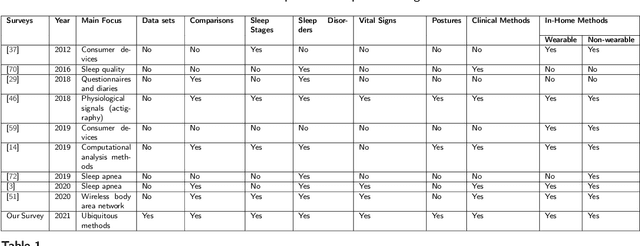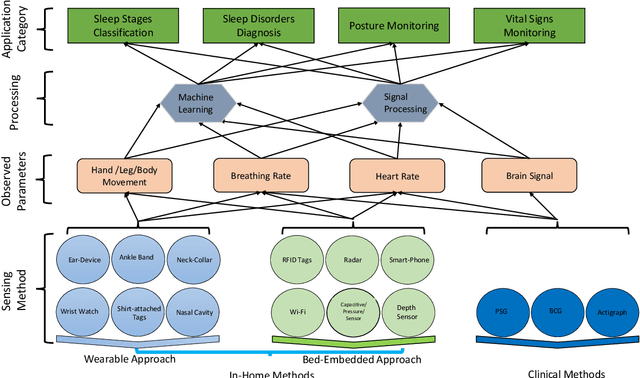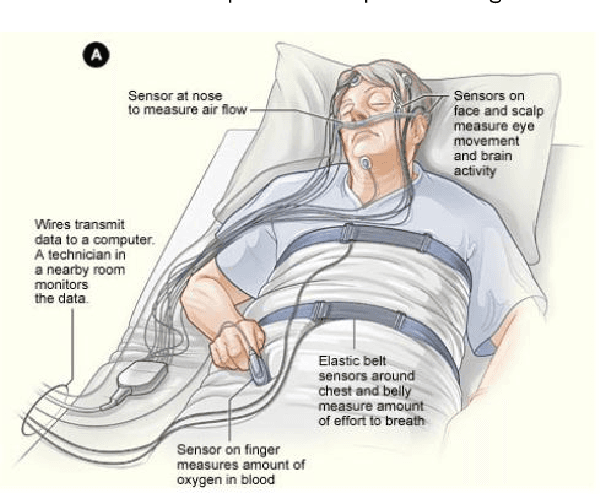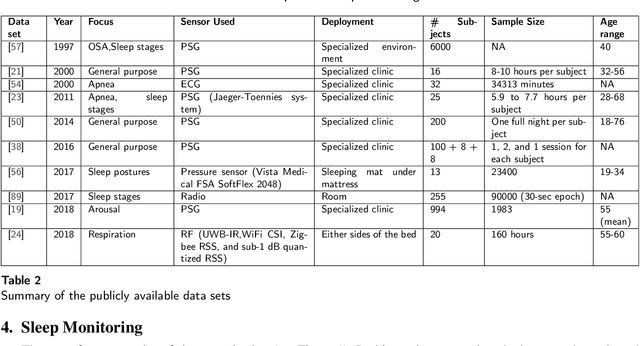A Review of the Non-Invasive Techniques for Monitoring Different Aspects of Sleep
Paper and Code
Apr 27, 2021



Quality sleep is very important for a healthy life. Nowadays, many people around the world are not getting enough sleep which is having negative impacts on their lifestyles. Studies are being conducted for sleep monitoring and have now become an important tool for understanding sleep behavior. The gold standard method for sleep analysis is polysomnography (PSG) conducted in a clinical environment but this method is both expensive and complex for long-term use. With the advancements in the field of sensors and the introduction of off-the-shelf technologies, unobtrusive solutions are becoming common as alternatives for in-home sleep monitoring. Various solutions have been proposed using both wearable and non-wearable methods which are cheap and easy to use for in-home sleep monitoring. In this paper, we present a comprehensive survey of the latest research works (2015 and after) conducted in various categories of sleep monitoring including sleep stage classification, sleep posture recognition, sleep disorders detection, and vital signs monitoring. We review the latest works done using the non-invasive approach and cover both wearable and non-wearable methods. We discuss the design approaches and key attributes of the work presented and provide an extensive analysis based on 10 key factors, to give a comprehensive overview of the recent developments and trends in all four categories of sleep monitoring. We also present some publicly available datasets for different categories of sleep monitoring. In the end, we discuss several open issues and provide future research directions in the area of sleep monitoring.
 Add to Chrome
Add to Chrome Add to Firefox
Add to Firefox Add to Edge
Add to Edge